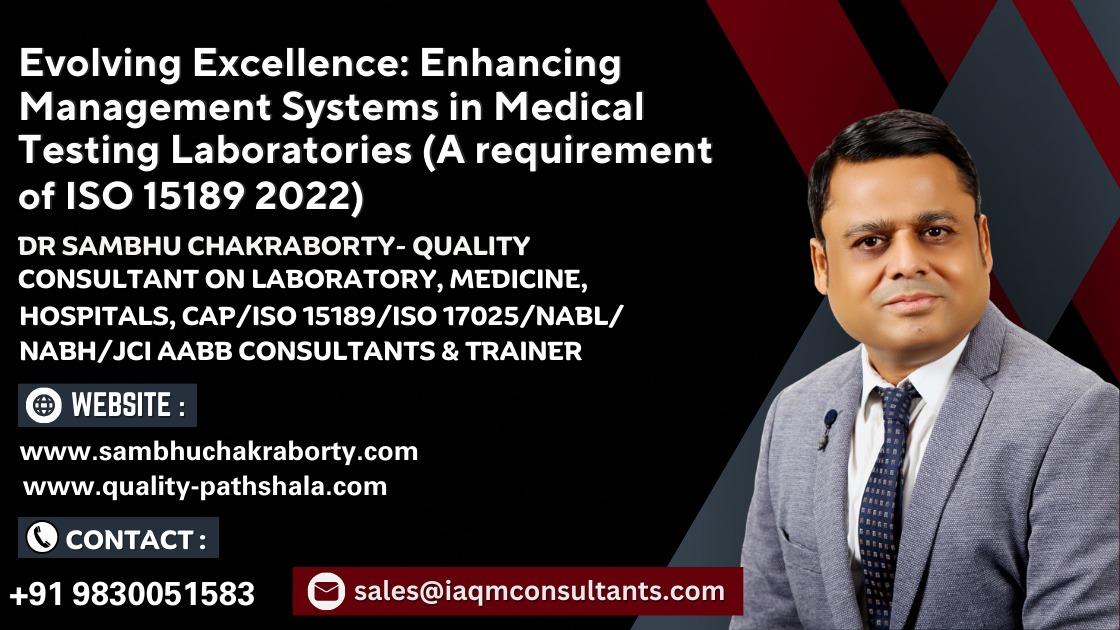In the dynamic environment of a medical testing laboratory, the effectiveness of management systems is not just about compliance; it’s about commitment to excellence. The pre-examination, examination, and post-examination processes form the core of laboratory operations, where even minor enhancements can significantly impact patient care and diagnostic accuracy.
Pre-Examination Process Improvements:
The journey to diagnostic precision begins well before any test is conducted. Effective specimen collection, accurate labeling, and meticulous tracking set the stage for reliable results. Improvements in this phase involve integrating innovative software solutions that offer real-time tracking and data management capabilities, ensuring that specimens are handled with the utmost care and precision. Training laboratory personnel in the latest collection and handling protocols is also crucial, as it minimizes the risk of errors that could affect test outcomes.
Examination Process Improvements:
At the heart of the laboratory’s operations is the examination process. Upgrading to advanced testing equipment allows for more sensitive and accurate assays, which is paramount in delivering high-quality patient care. The standardization of procedures ensures consistency, while rigorous quality control measures, including regular calibration of equipment, ensure that each test is as accurate as the last. These improvements are not merely procedural; they are transformative, fostering a culture of excellence that permeates every aspect of the examination phase.
Post-Examination Process Improvements:
The final phase of the laboratory’s workflow is the interpretation and communication of results. Speed and accuracy in delivering results can be life-changing. By automating the reporting processes, laboratories can reduce turnaround times and enhance the accuracy of the reports delivered to healthcare providers. Moreover, clear and concise reports aid in better decision-making. Establishing a system for patient and provider feedback ensures that the laboratory’s services are continually refined and responsive to the needs of its users.
Measuring Effectiveness and Setting Objectives: T
he improvement of management systems is a measurable endeavor. By establishing specific key performance indicators (KPIs) for pre-examination, examination, and post-examination processes, laboratories can quantitatively assess their performance and identify areas for further improvement. These KPIs must align with the laboratory’s objectives and policies, ensuring that each improvement directly contributes to the overarching goal of exemplary patient care.
Policy Integration and Continuous Improvement:
The integration of these enhancements into the laboratory’s quality policy ensures that the commitment to improvement is not just a one-time initiative but a fundamental aspect of the laboratory’s ethos. The management system’s effectiveness is a reflection of an ongoing commitment to not just meet but exceed the standards of medical testing.
In conclusion, the pursuit of excellence in medical testing laboratories through the continual improvement of management systems is not just beneficial; it is essential. It is a commitment to patient care, a dedication to precision, and a promise of reliability that defines the future of diagnostics. As laboratories embrace this journey of continuous improvement, they pave the way for a new era of medical excellence.
Top of Form
Bottom of Form
Continual improvement in the effectiveness of the management system within the pre-examination, examination, and post-examination processes in a medical testing laboratory could encompass various initiatives and changes. Here are examples for each stage based on the aforementioned requirements:
Pre-Examination Process Improvements:
- Automated Sample Logging:
- Implementing a barcode system for patient identification and sample tracking to reduce manual entry errors.
- Enhanced Patient Preparation Guidelines:
- Providing clear, accessible instructions for patients on how to prepare for tests to ensure sample quality.
- Standardization of Collection Kits:
- Using pre-packaged, standardized collection kits to ensure consistency and completeness of sample collection.
- Regular Calibration of Collection Equipment:
- Ensuring that all equipment used for sample collection is regularly calibrated and maintained to avoid pre-analytical errors.
Examination Process Improvements:
- Upgraded Analytical Equipment:
- Incorporating the latest technology in analytical instruments for more accurate and reliable results.
- Proficiency Testing:
- Participating in external quality assurance programs to benchmark against other laboratories and identify areas for improvement.
- Method Validation:
- Regularly reviewing and validating testing methods to ensure they are up-to-date with current scientific standards.
- Cross-Training of Laboratory Staff:
- Training laboratory personnel in multiple analytical procedures to increase flexibility and reduce downtime.
Post-Examination Process Improvements:
- Electronic Reporting Systems:
- Implementing or upgrading to a more sophisticated LIS (Laboratory Information System) to streamline result reporting.
- Result Review Protocols:
- Establishing a multi-tier review process for test results to catch and correct errors before they reach the provider or patient.
- Customer Service Feedback Loop:
- Creating a system for collecting feedback from patients and providers to identify issues with test ordering or result interpretation.
- Turnaround Time Analysis:
- Continually monitoring and analyzing turnaround times to identify bottlenecks and improve lab efficiency.
For all processes:
Quality Improvement Teams:
- Establishing dedicated quality improvement teams responsible for ongoing review of laboratory processes and implementing changes.
Data-Driven Decision Making:
- Utilizing statistical methods and data analysis tools to identify trends, process variability, and areas for process control and improvement.
Training and Competency Evaluations:
- Regular competency evaluations and targeted training to ensure that staff are proficient in the latest procedures and technologies.
Environmental Monitoring:
- Continuous monitoring and control of laboratory environments to ensure they meet the necessary conditions for accurate test performance.
These examples illustrate a commitment to dynamic improvement and adherence to the highest standards of laboratory practice, contributing to the overall reliability and efficiency of the medical testing laboratory.
